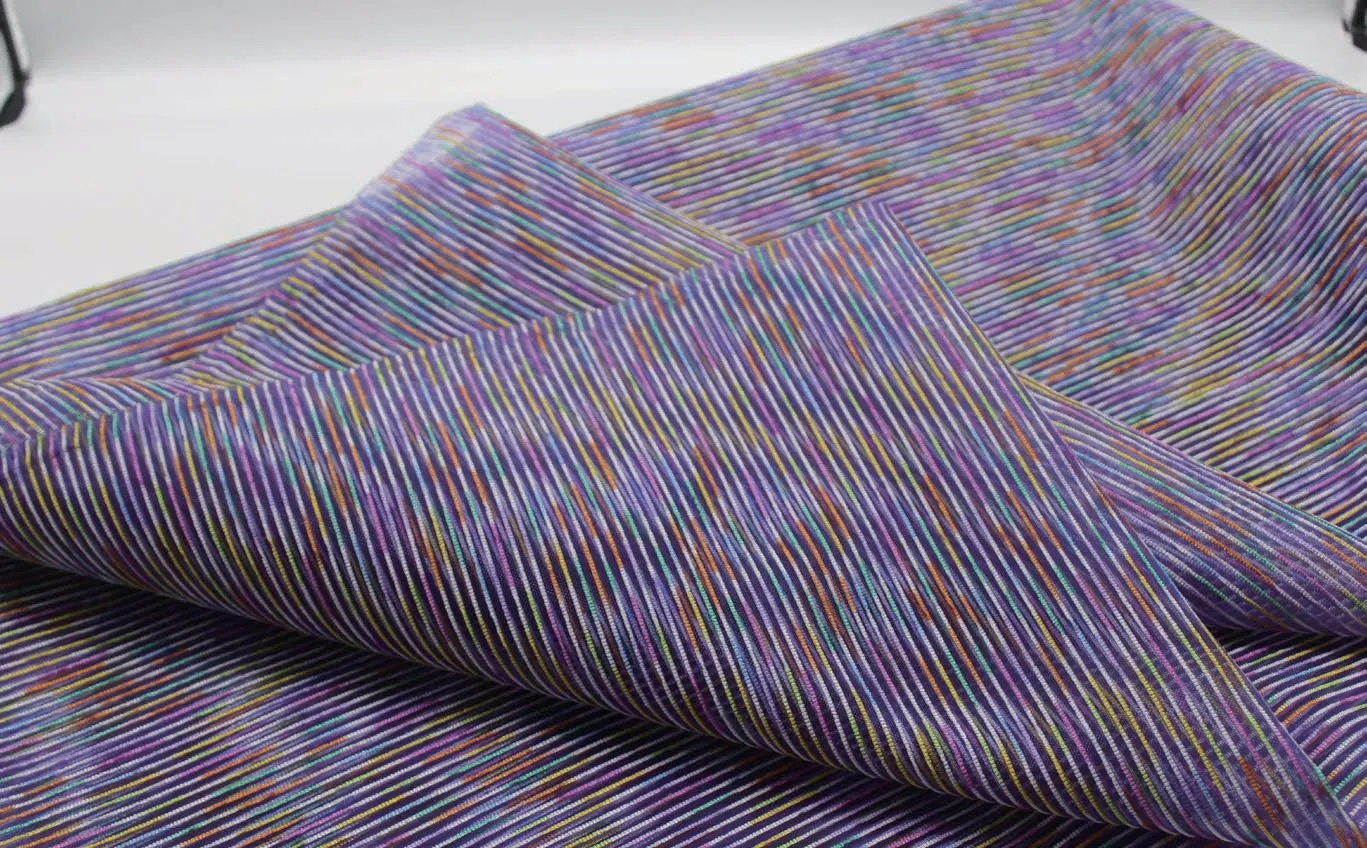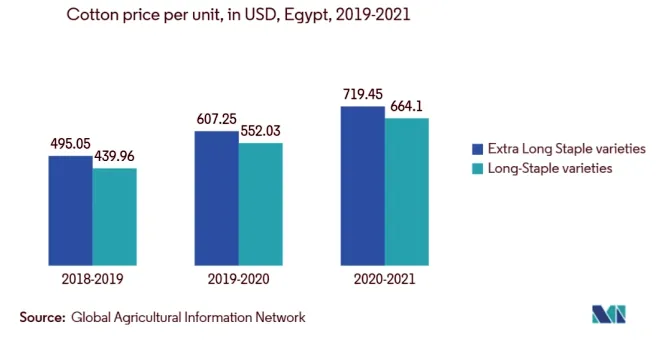Egypt’s efforts to expand garment exports are conducive to Chinese textile enterprises to explore the African market
By Zhao Xinhua

TThe textiles and ready—made garments in—dustry is the second—largest industrial sector in Egypt. It represents 34 percent of the industrial output and 11 percent of the total Egyptian exports,with average annual exports of USD 3 billion dur—ing the last 3 years, half of which are ready—made garments. Egypt has an ample labor pool with competitive and stable wages. Government runs various training programmes, continuously upgrad—ing the skill sets of the labors. The Egyptian textile manufacturing industry is anticipated to register a CAGR of over 4 percent during the forecast period(2022—2027), as rising foreign investments of USD 17.5 billion and the government trying to quadruple textile and garment exports by 2025.
Egypt is a large producer and exporter of long staple cotton, about 90 percent of Egypt’s raw ma—terial exports corresponded to cotton (not carded or combed) and artificial and synthetic fibers (mainly staple fibers, not carded or combed). Egypt’s tradi—tional pillar industries, the cotton industry occupies an important position in the economy, is an impor—tant source of foreign exchange income, Egypt's long—staple cotton still accounts for 90 percent of Egyptian cotton production, which is worthy of be—ing the world's "long—staple cotton country", but as a result of consumer preferences change, the new technology of textile and international cotton industry competition, Egypt is losing its position in the world cotton industry and the development of Egyptian cotton industry urgently needs industrial reform. The figure below shows Egypt’s cotton im—ports and exports from 2019 to 2022.

Egypt’s geographical position gives it a strategic advantage to export to the United States and the Eu—ropean Union, which are also Egypt’s largest export markets. In 2019, Egypt’s textile and garment exports were USD 3.721 billion. Due to the continuing impact of the pandemic, Egypt exported USD 3.09 billion in 2021,among which the export of ready—made garments reached USD 2.083 billion, a year—on—year increase of 43 percent, setting a new record. About 56 percent of Egypt’s ready—made garments are exported to the United States market, 35 percent to the European Union market, about 6 percent to Turkey and about 3 percent to the GCC. The average global import of ready—made clothing annually is about half a trillion dollars, and the Egyptian market share is about 5 per thousand.
Egypt’s textile and apparel imports amounted to USD 3.805 billion in 2021, of which textile imports were about USD 3.294 billion and garment imports were about USD 511 million. Egypt is one of the important countries for China’s cooperation along the Belt and Road. China is also an important trading partner of Egypt and the largest source of textile and garment imports.
Egypt has become the f irst choice for many Chinese textile enterprises to explore the African market. In ad—dition to the advantages of the Egyptian market itself, it mainly benef its from the long—standing good cooperation between China and Egypt in political and economic as—pects. For Chinese companies, investing in a textile busi—ness in Egypt means access to the Middle East, Africa,Europe and the U.S. as well as the Egyptian market.
In addition to significantly reducing transportation costs, with Egypt’s free trade agreements with the Eu—ropean Union, the COMESA and Arab countries, as well as the QIZ agreements signed with Israel and the United States, textile and garment products can eff ectively cir—cumvent trade barriers and be exported to the United States and EU countries.
After the outbreak of the conflict between Russia and Ukraine, Egypt has become one of the hardest hit countries. The impact of the Russia—Ukraine conflict on Egypt is much worse than COVID—19, with rising prices,especially for gas and goods, putting severe pressure on the Egyptian economy, said Egyptian Prime Minister Mo—stafa Madbouly (L).
Production was largely aff ected by the rise in cotton and raw material prices, with cotton consumption in spin—ning mills growing at an annual rate of 3 percent and the use of recycled and synthetic fibers increasing. In addi—tion, the existing textile machinery is relatively backward,low productivity, production costs higher than competi—tors. Egypt’s inf lation rate has reached double digits and the market is volatile. The figure below shows the price changes (in USD) of Egyptian cotton (extra—long—staple and long—staple) in 2019—2021.

In March 2022, Egypt has planned to open the world’s largest textiles factory in El—Mahalla, which have a daily production capacity of 30 tonnes. It has announced incentives to grow high—quality cotton that fulf ill factory needs which are expected to create opportunities for the players operating in the market.
Egypt’s Ready Made Garment Export Council (RMGEC)recently signed a cooperation agreement with the exporter and producer department of the country’s customs author—ity to support garment exporters access foreign markets.Th e chairman of RMGEC said the agreement was part of a government directive to double Egypt’s exports. In addition to easing the process for exporting Egyptian clothing to for—eign markets, the agreement also aims to simplify customs clearance procedures.
Egypt is working on a f ive—pronged plan to deal with a possible future global economic crisis. Th e plan focuses on supporting the localization of industry and promoting exports of local products, increasing the share of private enterprise in Egypt’s economy and reducing the govern—ment budget def icit and public debt.
According to the Sustainable Development Strategy(SDS): Egypt Vision 2030, the textile and garment sec—tor is striving to achieve three main goals: deepening the industry, rationalizing imports and increasing exports.

